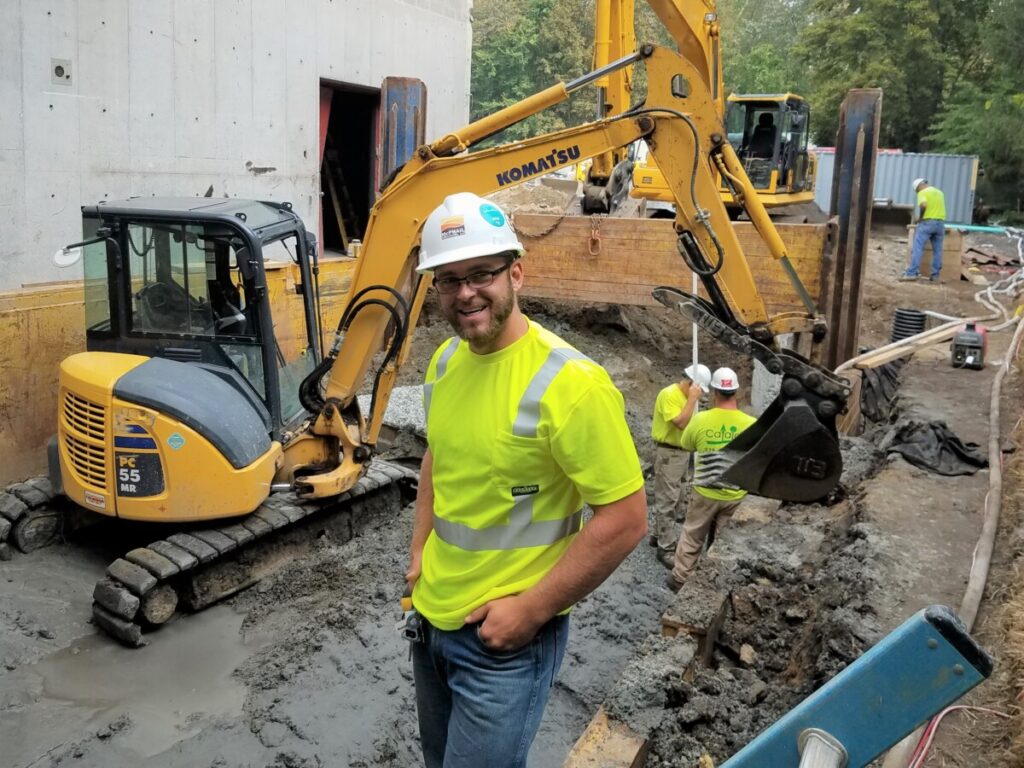The Vital Payments of Geotechnical Engineers in Examining Dirt Behavior and Structure Layout for Lasting Facilities Advancement
Geotechnical engineers offer as a keystone in the world of lasting infrastructure advancement, where their knowledge in evaluating dirt behavior straight affects the safety and long life of structures. By employing innovative strategies such as Basic Infiltration Tests and Cone Infiltration Testing, they meticulously examine soil residential properties, leading to informed choices on foundation layout.
Function of Geotechnical Engineers

In addition to website investigations, geotechnical engineers evaluate possible risks such as dirt liquefaction, slope stability, and groundwater problems. They use advanced design principles to develop solutions that reduce these threats, ensuring that styles adhere to appropriate codes and requirements. Their job frequently entails partnership with various other design techniques, architects, and environmental scientists to develop integrated techniques to infrastructure advancement.
Moreover, geotechnical engineers contribute to sustainable practices by advertising the usage of materials and techniques that reduce ecological influence. Through their comprehensive understanding of dirt auto mechanics and geology, they play a vital function in fostering safe, resistant, and sustainable framework that fulfills the demands of culture while safeguarding the environment.
Soil Habits Analysis Methods
Comprehending soil habits is basic to informed decision-making in geotechnical engineering, as it directly influences the design and building procedures. Various assessment techniques are utilized to examine soil buildings, guaranteeing accurate predictions of its efficiency under various loading problems.
One primary approach is the Standard Infiltration Examination (SPT), which supplies insights right into dirt thickness and consistency through the resistance encountered throughout penetration. Cone Penetration Screening (CPT) supplies a continuous profile of soil stratification and in-situ stamina criteria, enabling a much more comprehensive understanding of subsurface conditions.
Research laboratory tests, such as Atterberg limits, unconfined compressive strength, and triaxial examinations, are crucial for defining dirt habits under controlled problems. These examinations promote the determination of crucial criteria, including shear strength, compressibility, and permeability.

Foundation Layout Concepts
Foundation style concepts are crucial for making certain the security and long life of structures, as they determine just how loads are transmitted from the superstructure to the underlying soil. These principles include numerous factors to consider, consisting of load-bearing capacity, negotiation, and side stability. A comprehensive understanding of soil auto mechanics is vital for geotechnical designers to evaluate the communication between the foundation and the dirt.
One key concept is the proper choice of foundation kind, which may include superficial structures, such as spread footings, or deep structures, like caissons or stacks, depending upon dirt problems and architectural lots - geotechnical eng. The structure has to be created to reduce differential negotiation, which can cause architectural damage

Lasting Facilities Practices
How can we efficiently integrate sustainability into framework techniques? Sustainable infrastructure practices begin with comprehensive site evaluations, which evaluate soil habits, local environments, and source schedule.
Furthermore, utilizing innovative building techniques, such as utilizing low-impact structures and recycled products, substantially minimizes the carbon footprint of facilities tasks. Geotechnical designers play an essential role in picking ideal products that improve resilience and sustainability, such as utilizing geo-synthetics to boost dirt stability and lower disintegration.
In addition, sustainable facilities methods need continuous tracking and upkeep to make certain that structures remain resilient over time. Ultimately, these practices not just add to the long life of frameworks yet additionally advertise a much healthier atmosphere, straightening facilities growth with more comprehensive sustainability purposes.
Case Research Studies and Applications
Case studies in geotechnical design give beneficial insights into the practical applications of soil habits and sustainable infrastructure methods. One significant instance is the construction of the Burj Khalifa in Dubai, where extensive soil testing and evaluation were conducted to assess the one-of-a-kind difficulties presented by the region's loose sand and high water table. Geotechnical designers employed advanced techniques such as dynamic penetrating and cone penetration screening to figure out the soil's load-bearing capacity, ultimately bring about the design of a deep foundation system that sustains this iconic structure.
One more vital instance is the remediation of the San Francisco-Oakland Bay Bridge after the 1989 Loma Prieta earthquake. Geotechnical assessments exposed the demand for dirt stabilization methods, consisting of grouting and dirt nailing, to enhance the seismic strength of the structure. These treatments not just boosted the bridge's safety however also added to its longevity and sustainability.
Such situation research studies exhibit how geotechnical designers play a vital role in comprehending dirt behavior and using cutting-edge solutions to guarantee the architectural integrity and sustainability of infrastructure projects. geotechnical industry. Their know-how is necessary in resolving the complex tests presented a knockout post by various dirt problems across varied geographical areas
Verdict
To conclude, the payments of geotechnical designers are essential for the analysis of dirt actions and the style of structures, which are vital for sustainable infrastructure development. Via the application of innovative testing methods and innovative materials, these specialists ensure the stability and security of frameworks while decreasing ecological influences. The assimilation of sustainable techniques promotes resilience in infrastructure jobs, highlighting the importance of collaboration amongst stakeholders to accomplish efficient construction options that satisfy both environmental and social requirements.
Geotechnical designers offer as a keystone in the world of sustainable facilities growth, where their competence in evaluating soil behavior directly influences the safety and long life of structures.Geotechnical designers play an important function in the style and building of framework by evaluating dirt and rock habits to make sure stability and security. An extensive understanding of soil auto mechanics is crucial for geotechnical engineers to review the interaction between the foundation and the soil.
Geotechnical evaluations revealed the Discover More requirement for dirt stablizing methods, including grouting and dirt nailing, to boost the seismic strength of the structure.In final thought, the contributions of geotechnical engineers are crucial for the assessment of soil habits and the layout of foundations, which are vital for lasting infrastructure growth.